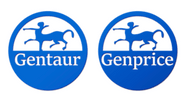Description
RAD51C Antibody | 58-132 | Gentaur UK, US & Europe Distribution
Host: Rabbit
Reactivity: Human
Homology: N/A
Immunogen: This RAD51C antibody is generated from rabbits immunized with a KLH conjugated synthetic peptide between 169-198 amino acids from the Central region of human RAD51C.
Research Area: Other
Tested Application: WB
Application: For WB starting dilution is: 1:1000
Specificiy: N/A
Positive Control 1: N/A
Positive Control 2: N/A
Positive Control 3: N/A
Positive Control 4: N/A
Positive Control 5: N/A
Positive Control 6: N/A
Molecular Weight: 42 kDa
Validation: N/A
Isoform: N/A
Purification: This antibody is purified through a protein A column, followed by peptide affinity purification.
Clonality: Polyclonal
Clone: N/A
Isotype: Rabbit Ig
Conjugate: Unconjugated
Physical State: Liquid
Buffer: Supplied in PBS with 0.09% (W/V) sodium azide.
Concentration: batch dependent
Storage Condition: Store at 4˚C for three months and -20˚C, stable for up to one year. As with all antibodies care should be taken to avoid repeated freeze thaw cycles. Antibodies should not be exposed to prolonged high temperatures.
Alternate Name: DNA repair protein RAD51 homolog 3, R51H3, RAD51 homolog C, RAD51-like protein 2, RAD51C, RAD51L2
User Note: Optimal dilutions for each application to be determined by the researcher.
BACKGROUND: This gene is a member of the RAD51 family of related genes, which encode strand-transfer proteins thought to be involved in recombinational repair of damaged DNA and in meiotic recombination. This gene product interacts with two other DNA repair proteins, encoded by RAD51B and XRCC3, but not with itself. The protein copurifies with XRCC3 protein in a complex, reflecting their endogenous association and suggesting a cooperative role during recombinational repair. This gene is one of four localized to a region of chromosome 17q23 where amplification occurs frequently in breast tumors. Overexpression of the four genes during amplification has been observed and suggests a possible role in tumor progression. Alternative splicing has been observed for this gene and two variants encoding different isoforms have been identified.






